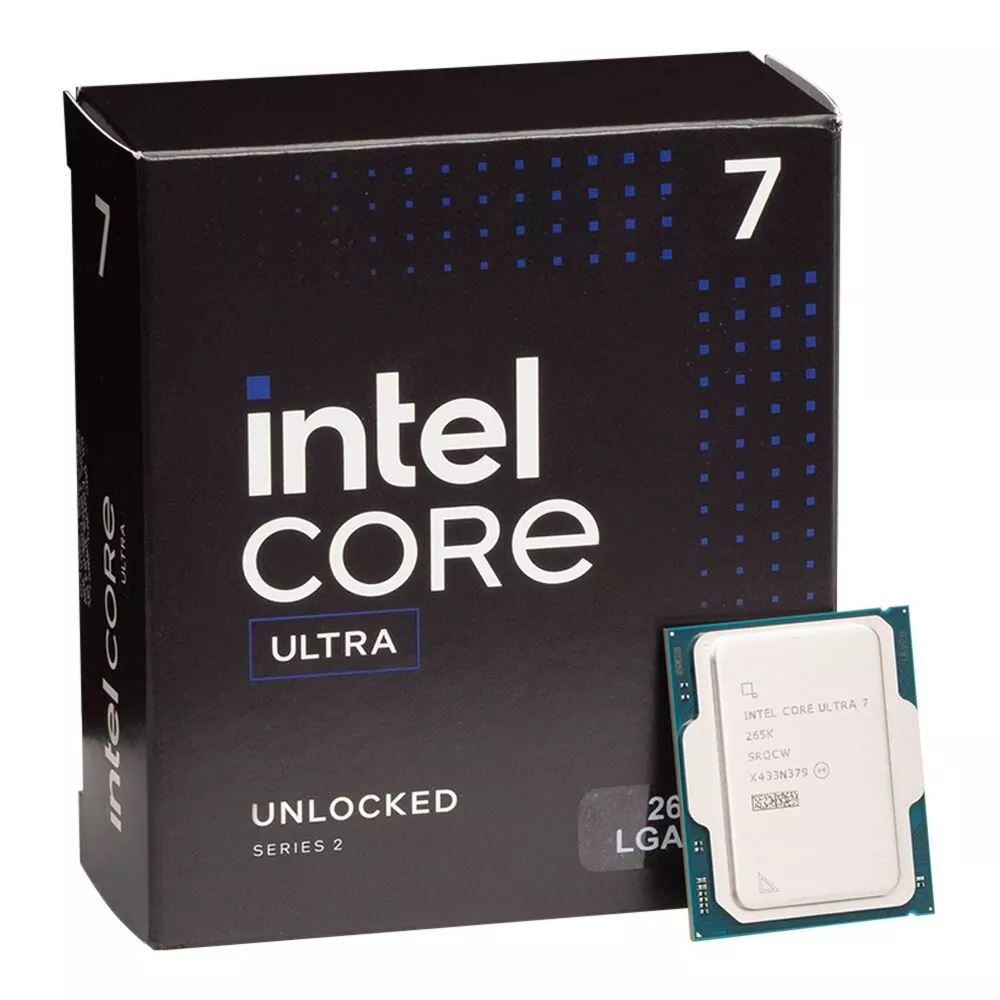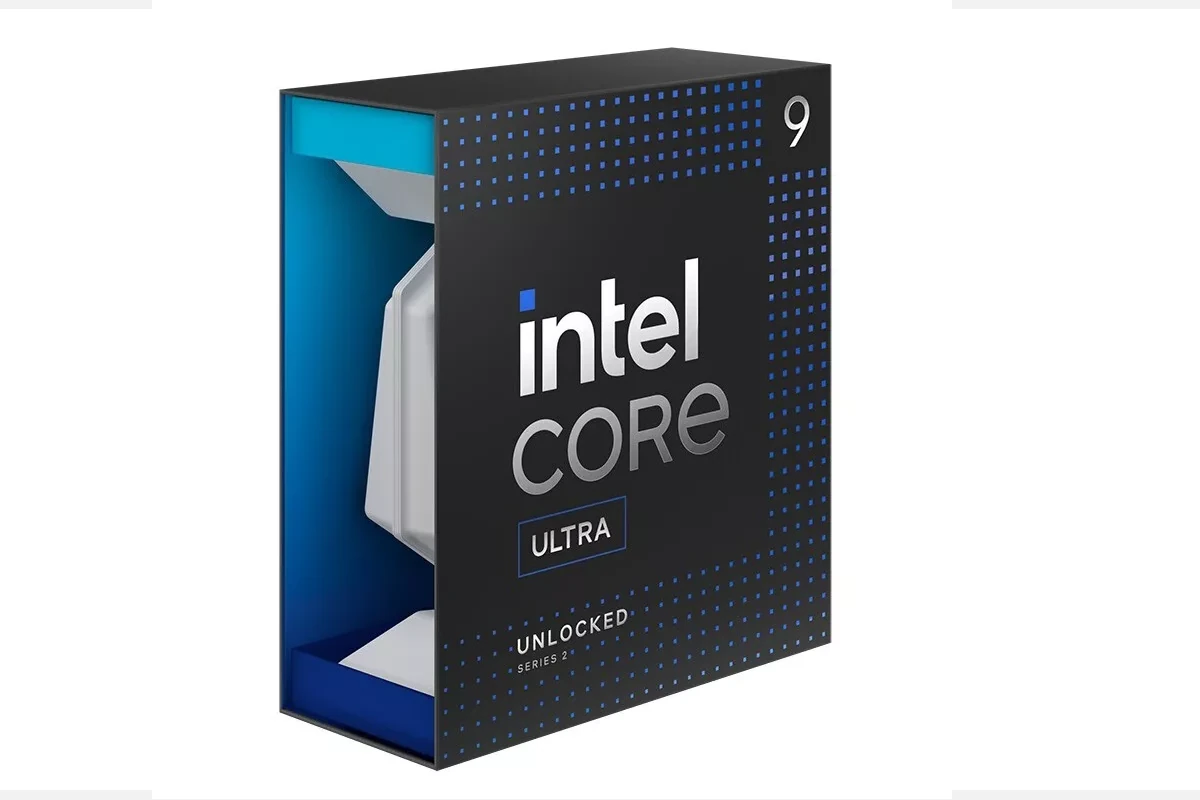Intel’s 15th generation processors, known as Arrow Lake, mark an important advancement in CPU technology. These processors focus on being power-efficient while also improving performance. Arrow Lake introduces a new naming system called Core Ultra.
This article offers a clear overview of Intel’s latest CPUs, including their specifications, release dates, and main features. Intel’s 15th generation Arrow Lake CPUs are set to significantly influence the computing world with their emphasis on efficiency and performance. We will update this article with the latest information about these processors as it becomes available.
A New Era for Intel CPUs: Core Ultra
One of the most notable changes with the 15th generation is the rebranding of Intel’s processor lineup. The new CPUs now carry the “Core Ultra” moniker, signifying a fresh approach to processor design and performance. This new naming convention simplifies the product stack and highlights the advancements in this generation.
Release Date and Initial Lineup
Intel launched the first Arrow Lake CPUs on October 24, 2024. The initial release included a range of processors designed for desktop computers, catering to various needs and budgets including the Intel Core Ultra 9 285K, Intel Core Ultra 7 265K, and Intel Core Ultra 5 245K.

Intel 15th Generation Processor Lineup
The initial Arrow Lake lineup features several models across the Core Ultra 5, 7, and 9 series. Here’s a detailed breakdown of the specifications:
| Model | Cores (P+E) | P-Core Clock | Boost Clock | iGPU | Memory Support | PCIe | TDP |
|---|---|---|---|---|---|---|---|
| Intel Core Ultra 5 225 | 6+4 | 3.3 GHz | 4.9 GHz | Intel Xe-LPG | DDR5-5600 | 5.0 | 65W |
| Intel Core Ultra 5 225F | 6+4 | 3.3 GHz | 4.9 GHz | None | DDR5-5600 | 5.0 | 65W |
| Intel Core Ultra 5 235 | 6+8 | 3.4 GHz | 5.0 GHz | Intel Xe-LPG | DDR5-5600 | 5.0 | 65W |
| Intel Core Ultra 5 245K | 6+8 | 4.2 GHz | 5.2 GHz | Intel Xe-LPG | DDR5-5600 | 5.0 | 125W |
| Intel Core Ultra 5 245KF | 6+8 | 4.2 GHz | 5.2 GHz | None | DDR5-5600 | 5.0 | 125W |
| Intel Core Ultra 7 265 | 8+12 | 2.4 GHz | 5.3 GHz | Intel Xe-LPG | DDR5-5600 | 5.0 | 65W |
| Intel Core Ultra 7 265F | 8+12 | 2.4 GHz | 5.3 GHz | None | DDR5-5600 | 5.0 | 65W |
| Intel Core Ultra 7 265K | 8+12 | 3.9 GHz | 5.5 GHz | Intel Xe-LPG | DDR5-5600 | 5.0 | 125W |
| Intel Core Ultra 7 265KF | 8+12 | 3.9 GHz | 5.5 GHz | None | DDR5-5600 | 5.0 | 125W |
| Intel Core Ultra 9 285 | 8+16 | 2.5 GHz | 5.6 GHz | Intel Xe-LPG | DDR5-5600 | 5.0 | 65W |
| Intel Core Ultra 9 285K | 8+16 | 3.7 GHz | 5.7 GHz | Intel Xe-LPG | DDR5-5600 | 5.0 | 125W |
Key Features and Improvements
Arrow Lake brings several key improvements to the table:
- Hybrid Core Architecture: The CPUs utilize a hybrid core design, combining Performance-cores (P-cores) and Efficient-cores (E-cores) for optimal performance and power efficiency. This allows the processors to handle demanding tasks while minimizing power consumption.
- Enhanced Performance: While focusing on efficiency, Arrow Lake also offers performance gains over previous generations, particularly in multi-threaded applications.
- Integrated Graphics: Most models include integrated Intel Xe-LPG graphics, providing decent performance for everyday tasks and light gaming. “F” series CPUs do not include integrated graphics.
- New Socket and Platform: Arrow Lake requires a new LGA 1851 socket, meaning they are not compatible with older motherboards. The new platform supports DDR5 memory and PCIe 5.0, enabling faster data transfer speeds.

Intel 15th Generation CPU Specifications
Intel Core Ultra 5 225: Balanced Performance for Everyday Computing
The Intel Core Ultra 5 225 is a mid-range processor designed for everyday computing tasks. It offers a balance of performance and power efficiency, making it suitable for home users, students, and office work. With its hybrid core architecture, integrated graphics, and support for DDR5 memory, the 225 provides a solid foundation for a variety of workloads.
| Cores (P+E) | 6+4 |
|---|---|
| P-Core Clock | 3.3 GHz |
| Boost Clock | 4.9 GHz |
| iGPU | Intel Xe-LPG |
| Memory Support | DDR5-5600 |
| PCIe | 5.0 |
| TDP | 65W |
Intel Core Ultra 5 225F: Performance Focused, Discrete Graphics Required
The Intel Core Ultra 5 225F is a variant of the 225 without integrated graphics. This makes it an ideal choice for users who plan to use a dedicated graphics card for enhanced gaming or content creation performance. By omitting the iGPU, the 225F can sometimes offer a slightly lower price point.
| Cores (P+E) | 6+4 |
|---|---|
| P-Core Clock | 3.3 GHz |
| Boost Clock | 4.9 GHz |
| iGPU | None |
| Memory Support | DDR5-5600 |
| PCIe | 5.0 |
| TDP | 65W |
Intel Core Ultra 5 235: Enhanced Multi-Core Performance
The Intel Core Ultra 5 235 offers enhanced multi-core performance compared to the 225, thanks to additional Efficient-cores (E-cores). This makes it better suited for multi-tasking and applications that can utilize more cores. It still includes integrated graphics for general use.
| Cores (P+E) | 6+8 |
|---|---|
| P-Core Clock | 3.4 GHz |
| Boost Clock | 5.0 GHz |
| iGPU | Intel Xe-LPG |
| Memory Support | DDR5-5600 |
| PCIe | 5.0 |
| TDP | 65W |
Intel Core Ultra 5 245K: Unlocked Performance for Enthusiasts
The Intel Core Ultra 5 245K is an unlocked processor, allowing for CPU overclocking. This gives enthusiasts and gamers the ability to push the processor beyond its base clock speeds for increased performance. It features more cores than the 235 and also includes integrated graphics.
| Cores (P+E) | 6+8 |
|---|---|
| P-Core Clock | 4.2 GHz |
| Boost Clock | 5.2 GHz |
| iGPU | Intel Xe-LPG |
| Memory Support | DDR5-5600 |
| PCIe | 5.0 |
| TDP | 125W |
Intel Core Ultra 5 245KF: Unlocked Performance with Discrete Graphics
The Intel Core Ultra 5 245KF is the unlocked variant of the 245K *without* integrated graphics. This CPU is designed for users who will be using a dedicated graphics card and want the flexibility to overclock their processor. It offers the same core configuration and clock speeds as the 245K.
| Cores (P+E) | 6+8 |
|---|---|
| P-Core Clock | 4.2 GHz |
| Boost Clock | 5.2 GHz |
| iGPU | None |
| Memory Support | DDR5-5600 |
| PCIe | 5.0 |
| TDP | 125W |
Intel Core Ultra 7 265: High Performance for Demanding Tasks
The Intel Core Ultra 7 265 is a high-performance processor designed for demanding tasks such as content creation, gaming, and professional workloads. It features a higher core count than the Core Ultra 5 series and includes integrated graphics.
| Cores (P+E) | 8+12 |
|---|---|
| P-Core Clock | 2.4 GHz |
| Boost Clock | 5.3 GHz |
| iGPU | Intel Xe-LPG |
| Memory Support | DDR5-5600 |
| PCIe | 5.0 |
| TDP | 65W |
Intel Core Ultra 7 265F: High Performance with Discrete Graphics
The Intel Core Ultra 7 265F is similar to the 265 but without integrated graphics. It’s designed for users who will be using a dedicated graphics card for their primary display output and want the high core count of the Core Ultra 7 series.
| Cores (P+E) | 8+12 |
|---|---|
| P-Core Clock | 2.4 GHz |
| Boost Clock | 5.3 GHz |
| iGPU | None |
| Memory Support | DDR5-5600 |
| PCIe | 5.0 |
| TDP | 65W |
Intel Core Ultra 7 265K: Unlocked High Performance for Enthusiasts
The Intel Core Ultra 7 265K is the unlocked version of the 265, allowing users to overclock the CPU. This processor combines high core counts with the flexibility of overclocking for users who want the best performance possible. It includes integrated graphics.
| Cores (P+E) | 8+12 |
|---|---|
| P-Core Clock | 3.9 GHz |
| Boost Clock | 5.5 GHz |
| iGPU | Intel Xe-LPG |
| Memory Support | DDR5-5600 |
| PCIe | 5.0 |
| TDP | 125W |
Intel Core Ultra 7 265KF: Unlocked High Performance with Discrete Graphics
The Intel Core Ultra 7 265KF is the unlocked version of the 265F, meaning it lacks integrated graphics and is designed for use with a dedicated graphics card. It offers the same core configuration and clock speeds as the 265K, but without the iGPU, making it suitable for high-end gaming and content creation builds.
| Cores (P+E) | 8+12 |
|---|---|
| P-Core Clock | 3.9 GHz |
| Boost Clock | 5.5 GHz |
| iGPU | None |
| Memory Support | DDR5-5600 |
| PCIe | 5.0 |
| TDP | 125W |
Intel Core Ultra 9 285: Flagship Performance for Professionals
The Intel Core Ultra 9 285 represents the flagship processor in the initial Arrow Lake lineup. It offers the highest core count, making it ideal for professional workloads that require significant multi-threading capabilities, such as video editing, 3D rendering, and scientific simulations. It includes integrated graphics.
| Cores (P+E) | 8+16 |
|---|---|
| P-Core Clock | 2.5 GHz |
| Boost Clock | 5.6 GHz |
| iGPU | Intel Xe-LPG |
| Memory Support | DDR5-5600 |
| PCIe | 5.0 |
| TDP | 65W |
Intel Core Ultra 9 285K: Unlocked Flagship Performance for Enthusiasts
The Intel Core Ultra 9 285K is the unlocked version of the 285, designed for enthusiasts and power users who demand the ultimate performance. With its unlocked multiplier, users can overclock the CPU to achieve even higher clock speeds and push the limits of performance. It includes integrated graphics.
| Cores (P+E) | 8+16 |
|---|---|
| P-Core Clock | 3.7 GHz |
| Boost Clock | 5.7 GHz |
| iGPU | Intel Xe-LPG |
| Memory Support | DDR5-5600 |
| PCIe | 5.0 |
| TDP | 125W |
Competing with the Best
Intel’s 15th generation CPUs are designed to compete with AMD’s Ryzen processors. The improvements in power efficiency and performance position Arrow Lake as a strong contender in the CPU market.
Looking Ahead
The initial release of Arrow Lake processors is just the beginning. Intel is expected to release additional models in the future, including mobile versions for laptops. These future CPUs may offer different core configurations, clock speeds, and power consumption levels to cater to a wider range of devices and users.







